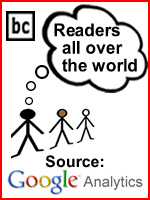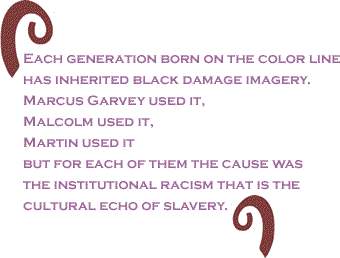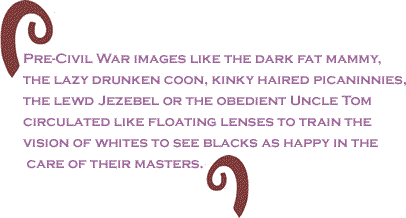
|
||||||||||||||||||||||
|
||||
 |
||||
I did not want to see this film. An obese black girl raped by her parents, cursed at, infected with H.I.V. who struggles to read. I see Precious everywhere. In �Do or Die� Bed Stuy mothers yell at children as if stabbing them with words or yank them around like dolls for not hurrying. At night, in the whispered talk between friends, I hear of bodies opened by the hot hands of fathers or mothers who hit their kids for being loud or antsy or for being the weight in their lives they must carry alone. Months ago I was in bed, adrift in half-sleep when a scream shot out. I dashed to the window. The next building is close enough to finger the dust off its ledge. Inside a girl begged whoever was hurting her to stop. I hollered, �Where are you?� Her screams were cut. I called the police.� Soon two cops jingling with badges, keys, guns jogged up the stairs. I guided them to the window. They peeked out then went down to the next building. In minutes they came out, got in their car and drove away. A month later the girl was screaming again.
Pre-Civil War images like the dark fat mammy, the lazy drunken coon, kinky haired picaninnies, the lewd Jezebel or the obedient Uncle Tom circulated like floating lenses to train the vision of whites to see blacks as happy in the care of their masters. In Daryl Scott�s Contempt and Pity we learn how after the smoke of war cleared, conservatives flipped the images of blacks from child-like servants to animal-like deviants. They cited black crime or illness as proof that without slavery blacks would destroy themselves or the nation. Again the imagery was violent and black people were damaged but here the cause was freedom and the cure was slavery. Each generation born on the color line has inherited black damage imagery. Marcus Garvey used it, Malcolm used it, Martin used it but for each of them the cause was the institutional racism that is the cultural echo of slavery. I use it to. Many of us on the Left do but warily brush shoulders with conservatives like Charles Murray of The Bell Curve, Dinesh D�Souza, Shelby Steel or James McWhorter where the cause is the innate deficiency of the black body or the internal pathologies of black culture. Using those images is like talking with a razor in the mouth. It cuts too easily and too wildly. And more often than not, we are being asked to wave our pain around because no one else is allowed to. As the Civil Rights Movement pushed wave after wave of black folk into the American mainstream it became less accepted for whites to use it. Yet the generations deep, historically resonant appetite whites have for black damage imagery is never filled. So it�s become profitable for black artists, Hip Hop specifically, to sell black pathology and it�s become painful for black critics to watch helplessly at it happens. What is at stake are images that conservatives use to scapegoat black people in general and black men in particular.
So when Alice Walker�s The Color Purple was published in 1982, she was accused by many critics, Ishmael Reed and Louis Farrakhan leading the charge, of collaborating with white supremacy. They thundered that she demonized black men, portrayed them as brutes and hence helped justify white contempt. They warned us that as long as black men are scapegoats for white anxiety we will never learn the truth about our nation, a truth Jesse Jackson made plain in his 1988 Democratic Convention speech, �Most poor people are not lazy. They are not black. They are not brown. They are mostly White and female and young. But whether White, Black or Brown, a hungry baby�s belly turned inside out is the same color � color it pain; color it hurt; color it agony.� But pain and hurt and agony is colored in America in order to displace white anxiety on to blacks who in turn rightly fear this spectacle. Words kill, images can destroy because they underwrite the racial social contract we silently sign our names to. Black damage imagery sells Hip Hop, sells news headlines, sells fear, sells harsh laws, sells death penalties and after the selling is done we are surrounded by so many monstrous reflections of ourselves that we begin to think they are real.
All I knew was I didn�t want any more shit in my head. Most my friends said the same but we felt that itchy curiosity that always wins out. While shopping; I bought a boot-leg copy from an African brother, left it in my bag and when I got to school next morning, saw it while rooting around for chalk. Class began. Everyone had glazed eyes from all-night caffeine-fueled writing that is the end-of-the-semester college ritual. �Are we going to learn today,� I asked. �Or will you waste time dawdling?� Row after row of eyes stared at me. �I said we�d begin democracy in class and you have the vote. My preference is we review for the final exam. The better prepared you are the better your grade. Or�,� I reached in my bag and pulled out the Precious DVD. Row after row of hands shot up, waved, snapped fingers, someone in the corner mock-howled like a wolf. �Christ, will anyone vote for final exam review,� I pleaded. They calmly stared at me and a student sitting mid-row said dryly, �The perils of democracy professor.� I laughed, put in the movie in, pressed play and sat in the dark, grading papers. The movie flickered on their faces and slowly their eyes hardened. When Precious was being raped and escaped into a glowing fantasy world one student squirmed, bundled her notes and said �We can turn it off now.� The class said no in one voice. They stared at Precious as if she carried their secrets for them and what happened to her happened to them. When she struggled to sound out a sentence, they held their breath until she reached the last word. When she wrestled her mother and fell down the stairs; they yelled �Run!� When her mother sat in the social worker�s office and confessed that she forced Precious between her legs, they sunk into silent horror and looked away.
At the end I flicked on the lights, stood in front of the class and saw Precious had become a symbol for their pain. The room felt thick as if filled with unspoken secrets that could not be put back inside. I breathed in the anxiety and shaped it, �I can feel that the movie brought a lot. Many of us here have dealt with at least one wound that Precious struggles with. Some of you have been abused physically or mentally or sexually. Some of you have been homeless. Some born into poverty. Some addicted to drugs. Some taunted for being black. Some for being big. So it�s easy to see yourself in this character which is why Precious works but the main goal of the movie is to know that if you�ve been hurt it�s not your fault. Like Precious, tell your story. Confront the cause of your pain and free yourself from it.� The flow passed through me back to them and they nodded. A young black woman in the front said, �I went to see it. People was so ignorant, laughing at her, cracking jokes. I couldn�t even watch the movie.� �I was worried folks would act up,� I scratched my eyebrow. �I think its nervous laughter. It�s too close to them and they make fun of it to hide from the truth.� Her eyes slimmed to moon-like slivers as she said, �People are scared of themselves.� The next class, again the vote, again Precious, again the hardened eyes, again the pain gushing through faces but at the climatic fight one of my best students began a large braying laugh. She was thick, chocolate colored and fell off her seat until everyone began trying to hush her but she laughed on and on as Precious was being beaten by her mother. Finally I said, �Is that nervous laughter?�
Maybe that�s why it pulled my students so powerfully, many of them have been damaged in the same ways but unknowingly hide shared secrets. As for Sapphire, the kids she knew and taught soaked her with their grief and it came gushing out; she was simply the channel. Again in that way she resembles the first slave narrators who wrote to give voice to those they loved but lost when they escaped to freedom. Like the slave narrators, the self stands in for the people. Yet unlike many real thrown-away kids, the character Precious survives. It�s one girl�s story and critics accused Sapphire of ignoring the system. Yet everyday people don�t see the �system� they see each other and if you want to show the �system� you have to show its scars on the body. When critics accuse her of using black damage imagery that gives whites the pleasure of voyeurism, of displacing anxiety we should turn the dialectical wheel. Should victims of systemic oppression not show symptoms of it? Is black on black crime not one of them? Is it not true that the powerless often attack those weaker than they? Why can�t we say that this happens with us to? Men attack women. Mothers attack children. Memories attack the present. How can we heal if we can�t see how we hurt each other?
Precious works because people identify with her. My students followed her as if watching their own shadow. I saw that shadow two days lager, when I took my mom to dinner for her birthday. We drank until a warm glow loosened our faces. Her voice flashed like a light inside scenes of her youth. I saw her picking her hair into an Afro, mud-dancing at Woodstock, acting off-Broadway and then I saw her run from home, Grandma saying �I tried to abort you� and Grandpa saying �I�m not wasting money on you to go to college. You�re just going to get pregnant.� She stopped and shook her head to get their voices out of her mind. I rubbed her back and realized as parents get older they drop their secrets into our hands. As she caught her breath, I remembered a scene from the movie where the mother stood on the stairs and blasted Precious with insults, �You�re a dummy. Don�t nobody want you. I should�ve aborted you.� I looked at my mother and thought of her as a child hearing those same words from her parents and how she carried those voices inside her long after they died. I looked at her and realized before I was born, she was a young girl who someone may have heard in the next building screaming for help. BlackCommentator.com Guest Commentator Nicholas Powers is an Assistant Professor at SUNY Old Westbury. Click here to contact Mr. Powers. |
||||
 |
||||
If you would like to comment on this article, please do so below. There is a 400 character limit. You do not need a FaceBook account. Your comment will be posted here on BC instantly. Thanks. Entering your email address is not mandatory. You may also choose to enter only your first name and your location.
|
||||
Thank you very much for your readership. |
||||
| Any BlackCommentator.com article may be re-printed so long as it is re-printed in its entirety and full credit given to the author and www.BlackCommentator.com. If the re-print is on the Internet we additionally request a link back to the original piece on our Website. | ||||
| |
||||
| December
10 , 2009 Issue 354 |
| Executive Editor: Bill Fletcher, Jr. |
| Managing Editor: Nancy Littlefield |
| Publisher: Peter Gamble |
| Est. April 5, 2002 |
| Printer Friendly Version in resizeable plain text format |
 |
 |

|
 |
| |
| |
















































